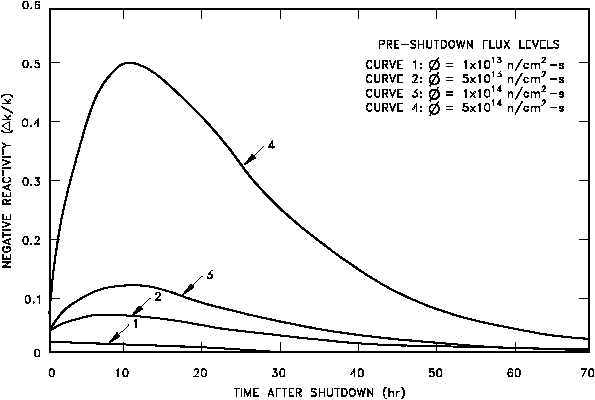XENON
DOE-HDBK-1019/2-93
Reactor Theory (Nuclear Parameters)
Xenon-135 Response to Reactor Shutdown
When a reactor is shutdown, the neutron flux is reduced essentially to zero. Therefore, after
shutdown, xenon-135 is no longer produced by fission and is no longer removed by burnup. The
only remaining production mechanism is the decay of the iodine-135 which was in the core at
the time of shutdown. The only removal mechanism for xenon-135 is decay.
dNXe
dt
lI NI lXe NXe
Because the decay rate of iodine-135 is faster than the decay rate of xenon-135, the xenon
concentration builds to a peak. The peak is reached when the product of the terms lINI is equal
to lXeNXe (in about 10 to 11 hours). Subsequently, the production from iodine decay is less than
the removal of xenon by decay, and the concentration of xenon-135 decreases. The greater the
flux level prior to shutdown, the greater the concentration of iodine-135 at shutdown; therefore,
the greater the peak in xenon-135 concentration after shutdown. This phenomenon can be seen
in Figure 5, which illustrates the negative reactivity value of xenon-135 following shutdown from
various neutron flux levels.
Figure 5 Xenon-135 Reactivity After Reactor Shutdown
NP-03
Rev. 0
Page 38

